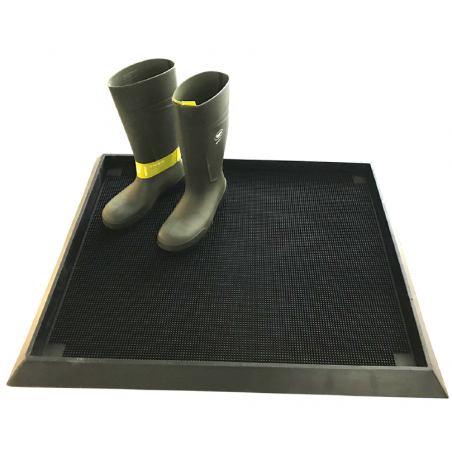Phosphorus (P) is an essential macro-element for pigs. However, dietary P derived from plant components is only partly digestible by monogastric animals, because P is mainly stored in the form of phytate. To release the P from phytate, phytase enzymes have been used commercially for decades in the pig industry. In this context, the aim of the present study was to evaluate increasing levels of a novel 6-phytase derived from the E. coli appA2 gene at levels of 0, 125, 250, 500 and 1000 FTU/kg in the diet of piglets to determine the effect on piglet performance, nutrient digestibility and bone mineralization. For that purpose, a total of 150 weaned piglets (ca. 8.2 kg BW) were allotted to one of five dietary treatments at weaning (30 pigs/treatment). Piglets were fed a basal diet from four to six weeks and a pre-starter diet from six to ten weeks of age. The basal diets contained reduced digestible phosphorus (P) and calcium (Ca) (1.5 g/kg digestible P, and Ca 5.5 g/kg and 5.6 g/kg for weaner and pre-starter, respectively) to provide a negative control. Phytase was added at 0, 125, 250, 500 and 1000 phytase units (FTU)/kg feed. Fecal samples were collected at 9 weeks of age and analyzed for P, Ca, and crude protein (CP) content to calculate digestibility. Metacarpal bone IV mineralization was assessed by ash content and the weight and length of the bone.
As a result, incremental increases of phytase improved final BW, ADG and FCR. The statistical model predicted a linear increase for ADFI, ADG and BW with increased phytase increments. As the effect on ADG and final BW was higher at the lowest doses, a quadratic effect for these parameters was observed, within the measured range of phytase levels. A reduction of 0.03 in FCR was observed for each 250 FTU/kg increase. For each increase in 250 FTU/kg, bone dry weight increased by 131 g and bone ash concentration by 1.9% of fat free dry matter.

In conclusion, these results suggest that the addition of phytase to piglet diets low in P led to better utilization of phytate-P and consequently better piglet performance.
De Cuyper C, Nollet L, Aluwé M, De Boever J, Douidah L, Vanderbeke E, Outchkourov N, Petkov S, Millet S. Effect of supplementing phytase on piglet performance, nutrient digestibility and bone mineralisation. Journal of Applied Animal Nutrition. 2020: 1-8. https://doi.org/10.3920/JAAN2019.0003




